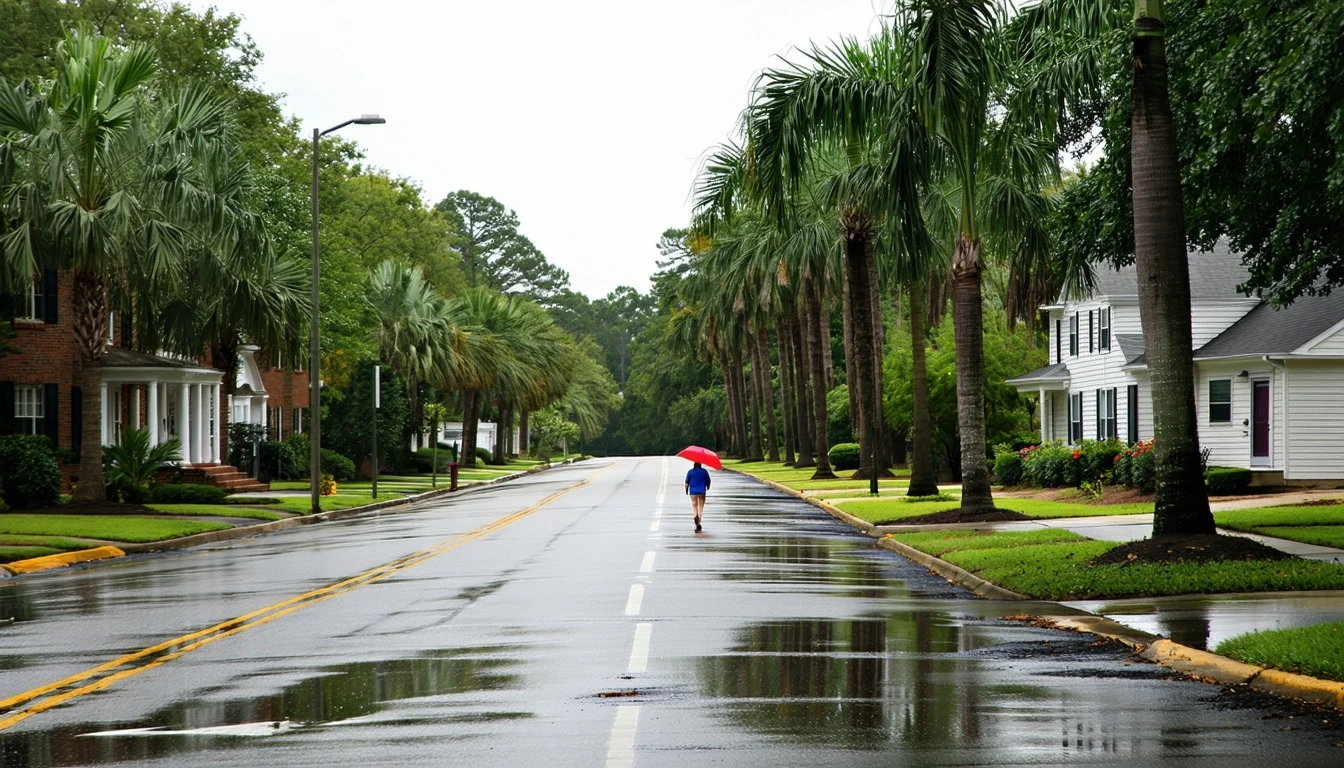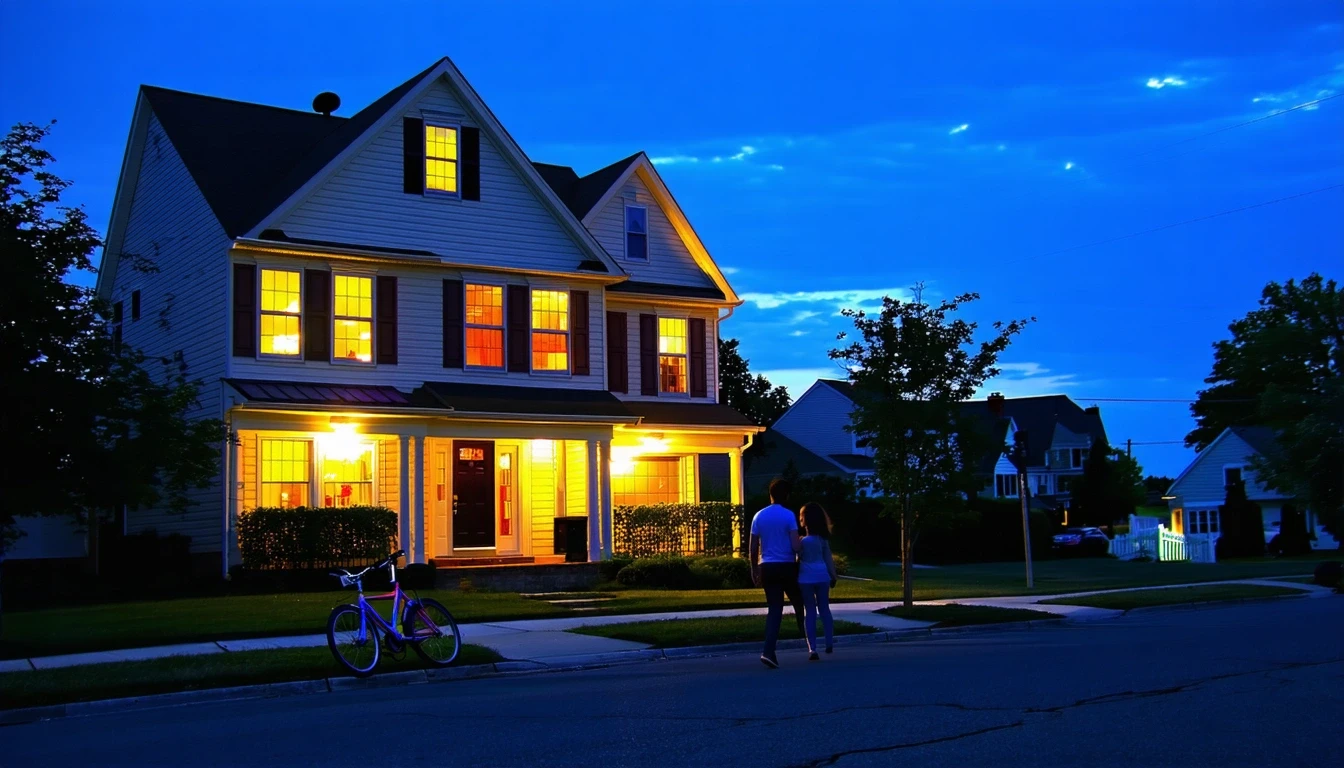
Falls Church, VA vs. Arlington, VA: Cost of Living Comparison (2025)
When deciding where to live in the Washington D.C. metro area, many people find themselves comparing the nearby Virginia suburbs of Falls Church and Arlington. While both offer a high quality of life with easy access to the nation’s capital, there are some notable differences in cost of living that can impact your monthly budget.
In 2025, the median home price in Arlington is nearly $200,000 higher than in Falls Church, making housing one of the biggest factors in the cost of living equation. However, Falls Church residents tend to have longer commutes and fewer public transit options. As you weigh the tradeoffs between more affordable housing and urban convenience, it’s important to look at the full picture of expenses in each city.
This article will break down the key cost of living categories – housing, utilities, groceries, taxes, and more – to help you determine which suburb best fits your lifestyle and budget in 2025. Whether you’re a young professional looking to rent or a growing family in the market to buy, understanding the nuances of each city’s costs can help you make a more informed decision.
Housing Costs
Housing is the most significant expense for most households, and the difference in costs between Falls Church and Arlington is substantial. In 2025, the median home price in Arlington is around $850,000, while in Falls Church it’s closer to $650,000. For a typical 3-bedroom single-family home, that translates to a mortgage payment that’s roughly $1,000 higher per month in Arlington.
Rents also tend to be pricier in Arlington, with a 2-bedroom apartment averaging about $2,800 per month compared to $2,300 in Falls Church. However, Arlington does offer a wider variety of rental options, from high-rise apartments near metro stations to small garden-style units in quieter neighborhoods. Falls Church has a more limited supply of rentals and is largely dominated by single-family homes.
| Housing Type | Falls Church | Arlington |
|---|---|---|
| Median Home Price | $650,000 | $850,000 |
| 2BR Apartment Rent | $2,300 | $2,800 |
| 3BR House Mortgage | $2,900 | $3,900 |
For young professionals who prioritize being close to work and nightlife, the higher housing costs in Arlington may be worth it. But for families who need more space on a tighter budget, Falls Church offers better value with its more affordable homes and highly-rated schools.
Overall, when it comes to housing costs, Falls Church has the edge over Arlington. The lower home prices and rents can translate to hundreds of dollars in monthly savings.
Utilities and Energy Costs

Utility costs are fairly comparable between Falls Church and Arlington, with both cities served by Dominion Energy for electricity and Washington Gas for natural gas. Residents can expect to pay around $150-200 per month for a 2-bedroom apartment, with costs rising to $250 or more for larger single-family homes.
Where seasonal differences emerge is in heating and cooling costs. Arlington’s higher density means more homes are insulated by shared walls, helping to keep temperatures stable. In Falls Church, the prevalence of detached homes means higher summer A/C bills and winter heating costs. Older homes in both cities also tend to be less energy-efficient than newer construction.
Since utility costs are largely a function of usage, household size matters more than location. A family of four will almost always pay more than a single person or couple, regardless of which city they live in. And while Arlington offers some energy-saving programs for low-income residents, participation is limited.
With all factors being equal, Falls Church and Arlington are neck-and-neck on utility costs. Budget-conscious residents in both cities can benefit from energy-efficient upgrades and mindful consumption habits.
Groceries and Daily Expenses
Both Falls Church and Arlington benefit from a wide variety of grocery options, from major chains like Giant and Safeway to specialty markets and ethnic food stores. Prices for staples like milk, bread, and eggs are largely similar, with a gallon of milk averaging $3.50 and a loaf of bread around $2.75 in both cities.
However, Arlington’s larger population and greater density does provide some economies of scale. Bulk purchases at stores like Costco can provide savings of 20% or more compared to smaller grocers. Arlington also has more discount chains like Aldi and Lidl, which can help keep the cost of packaged goods and produce down.
When it comes to dining out, Arlington has a clear advantage with its diverse restaurant scene. From cheap eats to high-end bistros, there’s something for every taste and budget. In Falls Church, options are more limited and prices for a nice dinner out can easily top $30-40 per person.
For daily expenses like groceries, Arlington comes out slightly ahead thanks to its greater variety of budget-friendly stores. But for the occasional splurge, Falls Church’s family-friendly eateries offer a more affordable night out.
Taxes and Fees
As part of the Commonwealth of Virginia, both Falls Church and Arlington have a state sales tax of 5.3%. However, Arlington adds on an extra 0.7% local tax, bringing the total to 6%. That means for every $100 spent, Arlington residents pay an extra 70 cents compared to those in Falls Church.
Property taxes are another area where Falls Church has an advantage. The city’s property tax rate is $1.355 per $100 of assessed value, compared to $1.013 in Arlington. For a home assessed at $650,000, that translates to an annual property tax bill of $8,800 in Falls Church versus $6,600 in Arlington.
Other taxes and fees are largely similar between the two cities. Vehicle registration costs $40.75 in both places, and annual car taxes are based on the value of the vehicle. Trash and water fees are also comparable, though Arlington does charge a bit more for recycling.
When it comes to taxes, Falls Church offers lower sales tax but higher property tax compared to Arlington. For renters and those who don’t own a car, Arlington may be slightly cheaper. But homeowners will save on their annual tax bill by choosing Falls Church.
Cost of Living Summary
| Category | Falls Church | Arlington |
|---|---|---|
| Housing (3BR House) | $2,900 | $3,900 |
| Utilities | $250 | $250 |
| Groceries | $800 | $750 |
| Transportation | $250 | $200 |
| Taxes (Property + Sales) | $740 | $600 |
| Misc. | $500 | $500 |
| Estimated Monthly Total* | $5,440 | $6,200 |
*Estimates reflect 2025 costs for a mid-size household (3-bedroom home) using published data and regional benchmarks. Actual expenses will vary with household size, lifestyle, and neighborhood. All income figures expressed as gross monthly income (pre-tax).
When looking at the total cost of living, Falls Church comes out ahead by about $760 per month, or roughly $9,000 per year. The biggest driver of this difference is housing costs, with Arlington homes and apartments commanding significantly higher prices.
However, these savings come with some tradeoffs. Arlington residents benefit from a wider variety of housing options, easier commutes, and a more vibrant dining and entertainment scene. For some, those perks may be worth the extra cost.
Lifestyle Fit
For many people, the decision between Falls Church and Arlington comes down to lifestyle priorities. Falls Church is ideal for families who value space, schools, and a tight-knit community feel. With its quiet streets, ample parks, and high-performing school system, it offers a quintessential suburban experience.
Meanwhile, Arlington is a better fit for young professionals and those who thrive on urban energy. Its walkable neighborhoods, diverse population, and easy Metro access provide a more cosmopolitan lifestyle. It’s a great place for singles and couples who want to be close to D.C.’s many cultural attractions.
Of course, both cities offer a high quality of life and plenty of amenities. Falls Church’s charming downtown is home to local boutiques, cozy cafes, and a weekly farmers market. Arlington’s vibrant arts scene includes theaters, galleries, and live music venues.
Ultimately, the right choice depends on your stage of life and personal preferences. By considering both the cost of living and lifestyle factors, you can find the Virginia suburb that best fits your needs in 2025.
Frequently Asked Questions
Is Falls Church more affordable than Arlington in 2025?
Yes, Falls Church has a lower overall cost of living than Arlington, driven largely by more affordable housing. The median home price in Falls Church is about $200,000 less than in Arlington.
How do utility costs compare between Falls Church and Arlington?
Utility costs are similar in both cities, with minor seasonal differences based on home size and energy efficiency. Expect to pay $150-$250 per month for a typical household.
Are grocery prices higher in Falls Church or Arlington?
Grocery prices are slightly lower in Arlington thanks to a wider variety of budget-friendly stores like Aldi and Lidl. However, prices for staples are comparable in both cities.
Do Falls Church and Arlington have different tax rates?
Yes, Falls Church has a lower sales tax rate of 5.3% compared to Arlington’s 6%. However, Falls Church’s property tax rate is higher at $1.355 per $100 of assessed value vs. $1.013 in Arlington.
How much can a family of four expect to spend per month in Falls Church vs. Arlington?
According to 2025 estimates, a family of four in a 3-bedroom home would spend about $5,440 per month in Falls Church compared to $6,200 in Arlington, a difference of $760. Actual costs will vary by neighborhood and lifestyle.
Conclusion
When it comes to cost of living, Falls Church has a clear advantage over Arlington. Housing costs are the biggest differentiator, with Falls Church offering more affordable options for both renters and buyers. Families and budget-conscious households can stretch their dollars further in Falls Church.
However, Arlington’s higher costs come with some notable benefits, including a more urban lifestyle, easier commutes, and a wider variety of cultural amenities. For some, those perks may be worth the premium.
Ultimately, the choice between these two Virginia suburbs depends on your individual priorities and stage of life. By weighing both the financial and lifestyle factors, you can make an informed decision about which city is right for you in 2025. For more information on budgeting and monthly expenses in Falls Church, check out our guides on average monthly expenses and overall cost of living. And if you do decide to make a move, our Best Moving Companies Guide can help you find a reputable and affordable mover.
